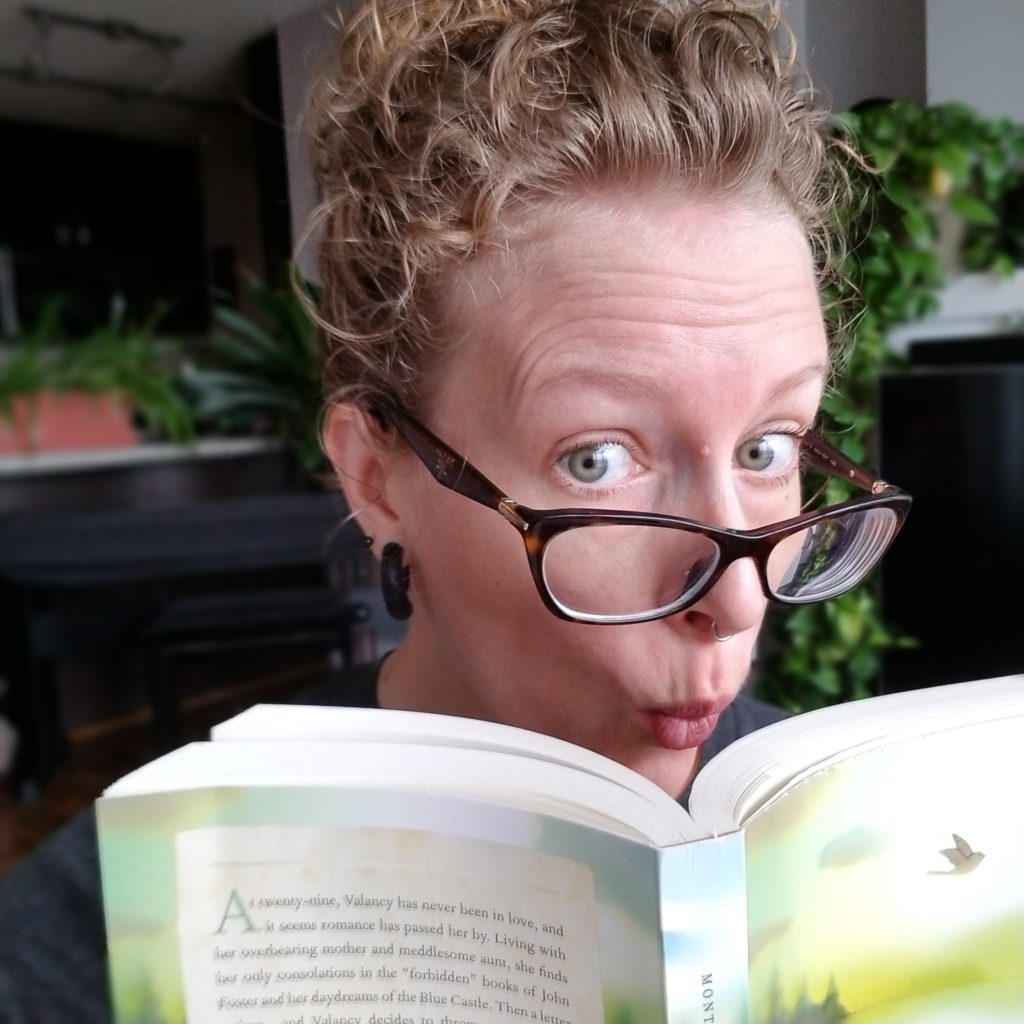
I am beginning to come around to the idea that it is impossible to read one short story per day for a whole year, given the evidence from 2022 and 2023.
I say beginning because although I’m here to tell you that I am NOT aiming to read 365 stories this year, 38% of me believes I can do it and will try anyway. (I owe all those percentage points to the fact that when I quit social media cold turkey last week, I had a whole lot more time and desire to read after work. Will it last? Can I run a small business without social media? I’ll keep you posted.)
| JAN |
January
2024-01-15 “A Christmas Tragedy” by Agatha Christie
Deviating from the usual format, Miss Marple illustrates her frustrations with her own sleuthing skills in the story of a husband out to get his wife. Originally published in Story-Teller Magazine (1930) and read in The Thirteen Problems by Agatha Christie (1932). Even though Miss Marple starts with the solve, the many twists and turns make this one of the best tellings so far. I also enjoy Christie’s bold exploration of how women’s minds work. 4 stars.
2024-01-13 “The Cone” by HG Wells
Raut and Mrs. Horrocks are discussing whether her husband knows of their affair when the door behind them closes and Mr. Horrocks appears. Raut and Horrocks go on about business together while Mrs. Horrocks is left behind to fret. Originally published in Unicorn (1895) and read in The Time Machine and Other Stories by HG Wells. Great suspense! Though this one was not meant to be a standalone story, and that makes it a bit of a strange story. SPOILER: I think it would have been more interesting had Raut overtaken Horrucks, and it ended the other way around. 3.5 stars.
2024-01-13 “The Strange Orchid” by HG Wells
Winter-Wedderburn wakes up feeling that something exciting will happen to him and heads out to an orchid sale, where he finds the bulb a famous orchid collector was harvesting when he died. Originally published in Pall Mall Budget (1894) and read in The Time Machine and Other Stories by HG Wells. SPOILER ALERT: People call this a cautionary tale, which makes sense. Only Wedderburn did want what he wished for, so the ending was extra satisfying. 4 stars.
2024-01-12 “The Four Suspects” by Agatha Christie
The party is discussing what happens to the innocent when a crime goes unsolved, and Sir Henry shares an unsolved murder with four equally innocent seeming suspects. Originally published in Story-Teller Magazine (1930) and read in The Thirteen Problems by Agatha Christie (1932). It is incredible to me that with Miss Marple in his life, Sir Henry has any unsolved crimes left. Suspension of belief aside, I did enjoy the well-researched resolution. 4 stars.
2024-01-11 “Travel By Wire!” by Arthur C Clarke
One of the inventors of the Radio-Transporter gives an interview about the trials, tribulations, and hijinks involved in its development. Originally published in Amateur Science Stories (1937) and read in The Collected Stories of Arthur C Clarke by Arthur C Clarke (2000). A short story that has all the trappings of a flash piece. The ending is perfect. I also love looking at the context of this piece, which was published around when TVs were starting to be available to the regular person. 3.5 stars.
2024-01-11 “Fox 8: A Story” by George Saunders
Like all forward thinkers, Fox 8 is often written off by the other foxes, but he tries not to let that stop him from bringing the world together. Read in Fox 8: A Story by George Saunders (2013). An excellent example of an ethical commentary from the POV of an animal. Rather than a preachy, thinly veiled authorial intrusion, Fox 8’s natural style makes you question what is at the centre of humanity. 4 stars.
2024-01-11 “The Companion” by Agatha Christie
On the topic of creepy stories, Dr. Lloyd reaches back to his days living in the Canary Islands for a tragic old tale about two unassuming British ladies on vacation. Originally published in Story-Teller Magazine (1930) and read in The Thirteen Problems by Agatha Christie (1932). I enjoyed the twists and turns in this one. I didn’t see Miss Marple’s conclusions coming. I do find it disappointing seeing how women writers have written ditsy female characters. We were no better than men in the creation of horrible tropes. 3.5 stars.
2024-01-10 “The Queen and I” by Jay McInerney
To complete the picture of his underground life, a man plays pimp for a friend but fails. Read in The Queen and I: A Bloomsbury Quid by Jay McInerney (1996). A good example of an untrustworthy first-person narrator. It seems he is trying to get us and himself to believe what he’s saying. 3 stars.
2024-01-10 “The Blue Geranium” by Agatha Christie
Mr. Bantry shares the story of a friend whose wife’s conviction that her fate is sealed is so strong that she appears to die from fright. Originally published in Story-Teller Magazine (1929) and read in The Thirteen Problems by Agatha Christie (1932). I like that we get a little more back and forth between the guests and more detail on how Miss Marple comes to her conclusions in this one. 3.5 stars.
2024-01-09 “The Thumbmark of St. Peter” by Agatha Christie
Miss Marple takes her turn describing the first murder mystery she ever solved. NOTHING goes unnoticed. Originally published in The Royal Magazine (1928) and read in The Thirteen Problems by Agatha Christie (1932). I enjoyed how Miss Marple takes us step by step through all the details as she learns them, but it’s a little unfair that she didn’t let the others guess the solution at the end! 4 stars.
2024-01-08 “Maître Mussard’s Bequest” by Patrick Süskind
As he nears death, Maître Mussard pens a letter to his reader begging to be believed. Originally published in Neu Deutch Hefte (1976) and read in Maître Mussard’s Bequest: A Bloomsbury Quid by Patrick Süskind (1996). I can understand why they published such an old story amongst so many first publications—little has changed, and the fear is still entirely relevant. 3.5 stars.
2024-01-08 “Harald, Claudia, and their Son Duncan” by Nadine Gordimer
Harald and Claudia receive news via Julian, a messenger from their son Duncan, that he will appear in court on Monday, but they are not to come. Read in Harald, Claudia, and their Son Duncan: A Bloomsbury Quid by Nadine Gordimer (1996). There are three kinds of endings for me: the one that satisfies my curiosity, the one that doesn’t, and the one that makes me want to reread the story to figure out how the author did it. This is the third kind.
2024-01-04 “Motive v. Opportunity” by Agatha Christie
Mr. Petherick tells the story of will tampering, assuring the guests that the solution isn’t a legal catch. Originally published in The Royal Magazine (1928) and read in The Thirteen Problems by Agatha Christie (1932). I enjoyed when Miss Marple called out Mr. Petherick before he even began, “Ah well, I am not so sure, but let’s hear the story.” 3.5 stars.
2024-01-03 “Ingots of Gold” by Agatha Christie
Raymond West takes his turn with a story of gold hunters heading to Cornwall to recover the gold from a sunken ship. Originally published in The Royal Magazine (1928) and read in The Thirteen Problems by Agatha Christie (1932). I can’t help but compare Miss Marple to Sherlock Holmes. I apologize now. They both have a sort of aloof, condescending humility: Holmes with the certainty of his research and Marple from her life experience. 3.5 stars.
2024-01-02 “The Idol House of Astarte” by Agatha Christie
It is Dr. Pender’s turn, and he tells the story of the time he was invited to the new property of his old friend with a small party of people who collectively witnessed his mysterious death. Originally published in The Royal Magazine (1928) and read in The Thirteen Problems by Agatha Christie (1932). I like the way that this story ends. It is rational but leaves room for the effect of the “atmosphere.” 3.5 stars.
2024-01-01 “The Tuesday Night Club” by Agatha Christie
Sir Henry tells the story of a lady who died, apparently of food poisoning, but the case was complicated by the discovery of arsenic in her body. The prime suspect was her husband, a travelling druggist. Originally published in The Royal Magazine (1927) and read in The Thirteen Problems by Agatha Christie (1932). I think the review of this introduction to Miss Marple would read, “Miss Marple’s mental acuity is not only demonstrated by her ability to puzzle out mysteries but her capacity to count her stitches and talk simultaneously. ” 3.5 stars.




